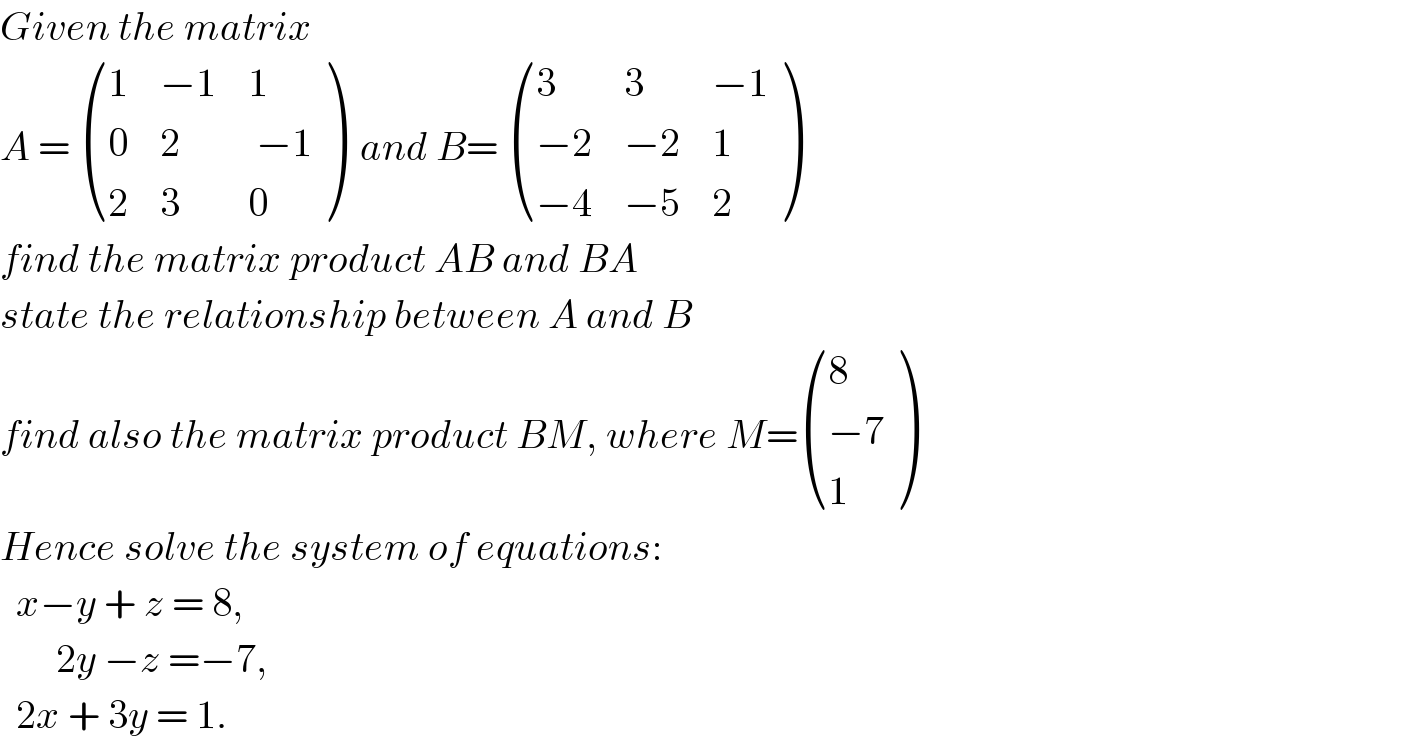Question Number 75099 by Rio Michael last updated on 07/Dec/19

Commented by kaivan.ahmadi last updated on 07/Dec/19

Commented by kaivan.ahmadi last updated on 07/Dec/19

Commented by kaivan.ahmadi last updated on 07/Dec/19

Commented by Rio Michael last updated on 07/Dec/19

Answered by Kunal12588 last updated on 07/Dec/19
![A= [(( 1),(−1),( 1)),(( 0),( 2),(−1)),(( 2),( 3),( 0)) ], B= [(( 3),( 3),(−1)),((−2),(−2),( 1)),((−4),(−5),( 2)) ] AB= [((3+2−4),(3+2−5),(−1−1+2)),((0−4+4),(0−4+5),( 0+2−2)),((6−6+0),(6−6+0),(−2+3+0)) ] ⇒AB= [(1,0,0),(0,1,0),(0,0,1) ]= I BA= [(( 3+0−2),(−3+6−3),( 3−3+0)),((−2+0+2),( 2−4+3),(−2+2+0)),((−4+0+4),( 4−10+6),(−4+5+0)) ] ⇒BA= [(1,0,0),(0,1,0),(0,0,1) ]= I ∵AB=BA=I⇒A^(−1) =B & B^(−1) =A M= [(( 8)),((−7)),(( 1)) ] BM= [(( 3),( 3),(−1)),((−2),(−2),( 1)),((−4),(−5),( 2)) ]_(3×3) [(( 8)),((−7)),(( 1)) ]_(3×1) ⇒BM= [(( 24−21−1)),((−16+14+1)),((−32+35+2)) ]= [(( 2)),((−1)),(( 5)) ] given eq^n can be written as [(( 1),(−1),( 1)),(( 0),( 2),(−1)),(( 2),( 3),( 0)) ] [(x),(y),(z) ]= [(( 8)),((−7)),(( 1)) ] ⇒AX=M ; with X= [(x),(y),(z) ] ⇒A^(−1) AX=A^(−1) M ⇒IX=A^(−1) M ⇒X=BM [∵ A^(−1) =B proved above] ⇒ [(x),(y),(z) ]= [(( 2)),((−1)),(( 5)) ] ⇒x=2,y=−1 & z=5](https://www.tinkutara.com/question/Q75128.png)
Commented by Rio Michael last updated on 07/Dec/19

